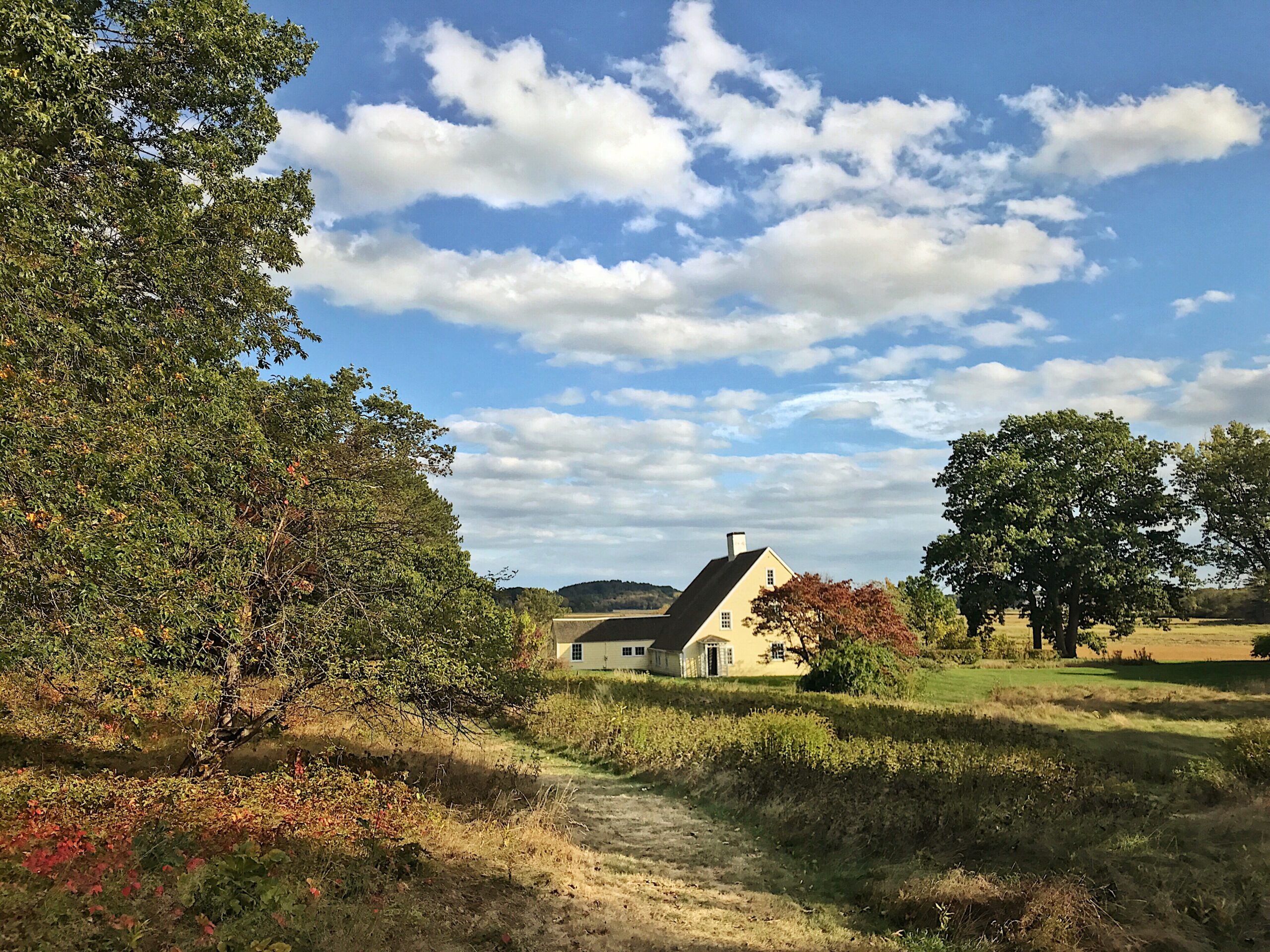Settled shortly after the founding of the Massachusetts Bay Colony, the property was part of a land grant from the Town of Ipswich to Robert Paine, and soon became known as the Paine Farm. Robert Paine, Jr., graduated Harvard in 1656. He served as jury foreman for the Salem witch trials in 1692.
Robert Paine, Jr., is considered the first occupant of the Paine house (circa 1694). The house is a fine example of first period architecture, a form that flourished in New England from 1625 until 1725. The Paine House is an integral lean-to, with the rear room and sloping saltbox roof part of the original construction.
The Paine family owned and managed the farm for three generations. By 1828, Thomas S. Greenwood, had built the large farmhouse adjacent to the Paine House. In 1911 the property was sold to Major Guy Murchie, who may have made some cosmetic changes to the two houses.
Robert Dodge, a prominent Boston attorney, purchased the property from Murchie in 1916. In 1920–21, the Dodges constructed all of the outbuildings seen on the property today, as well as doing major renovations to Greenwood’s farmhouse. Alice Childs Dodge collected furnishings for the Paine House and oversaw its restoration in 1936–37. At the request of the Dodge family, The Trustees of Reservations will preserve the Paine House as a museum. The farmhouse is used for private staff housing.
